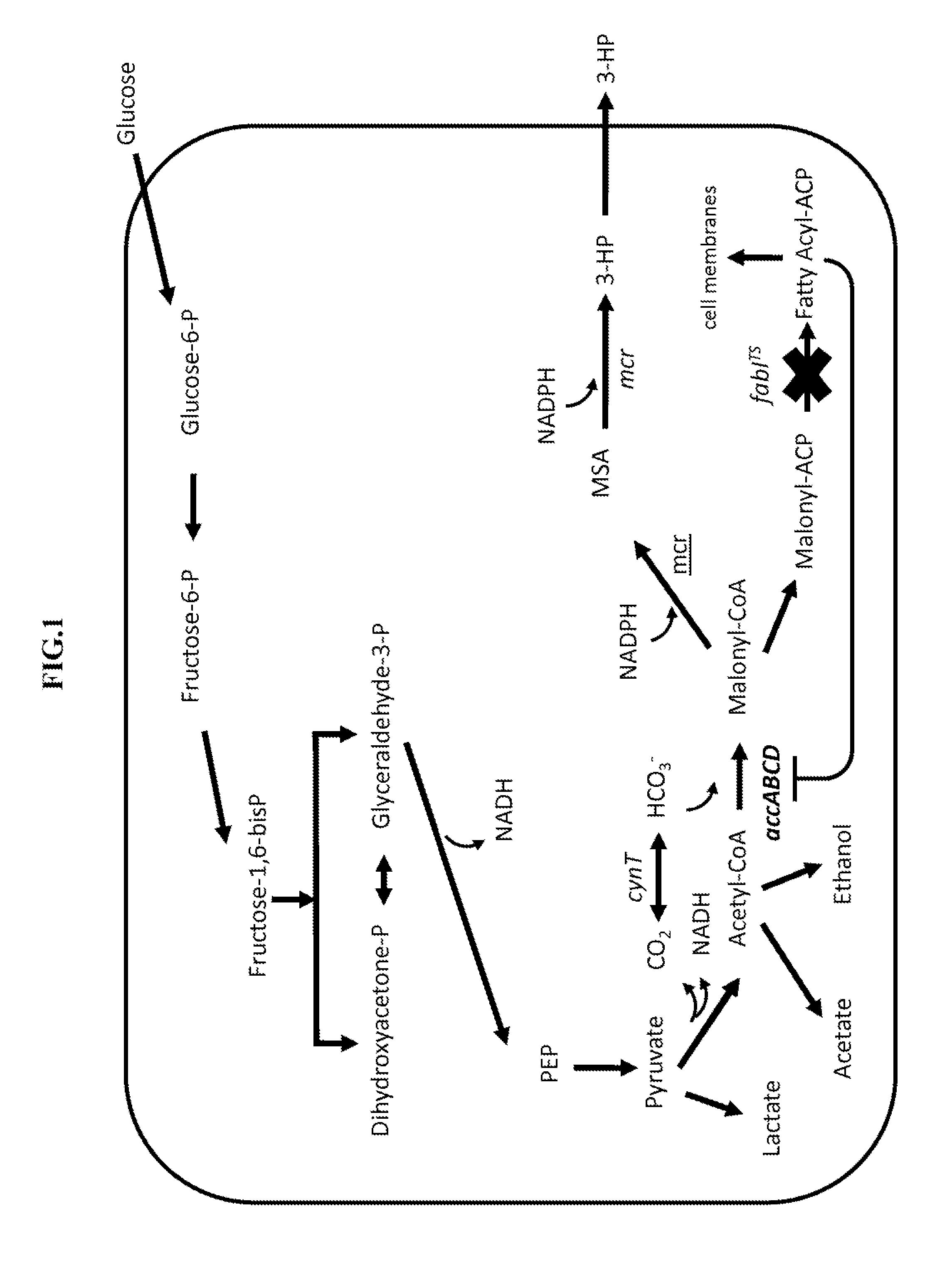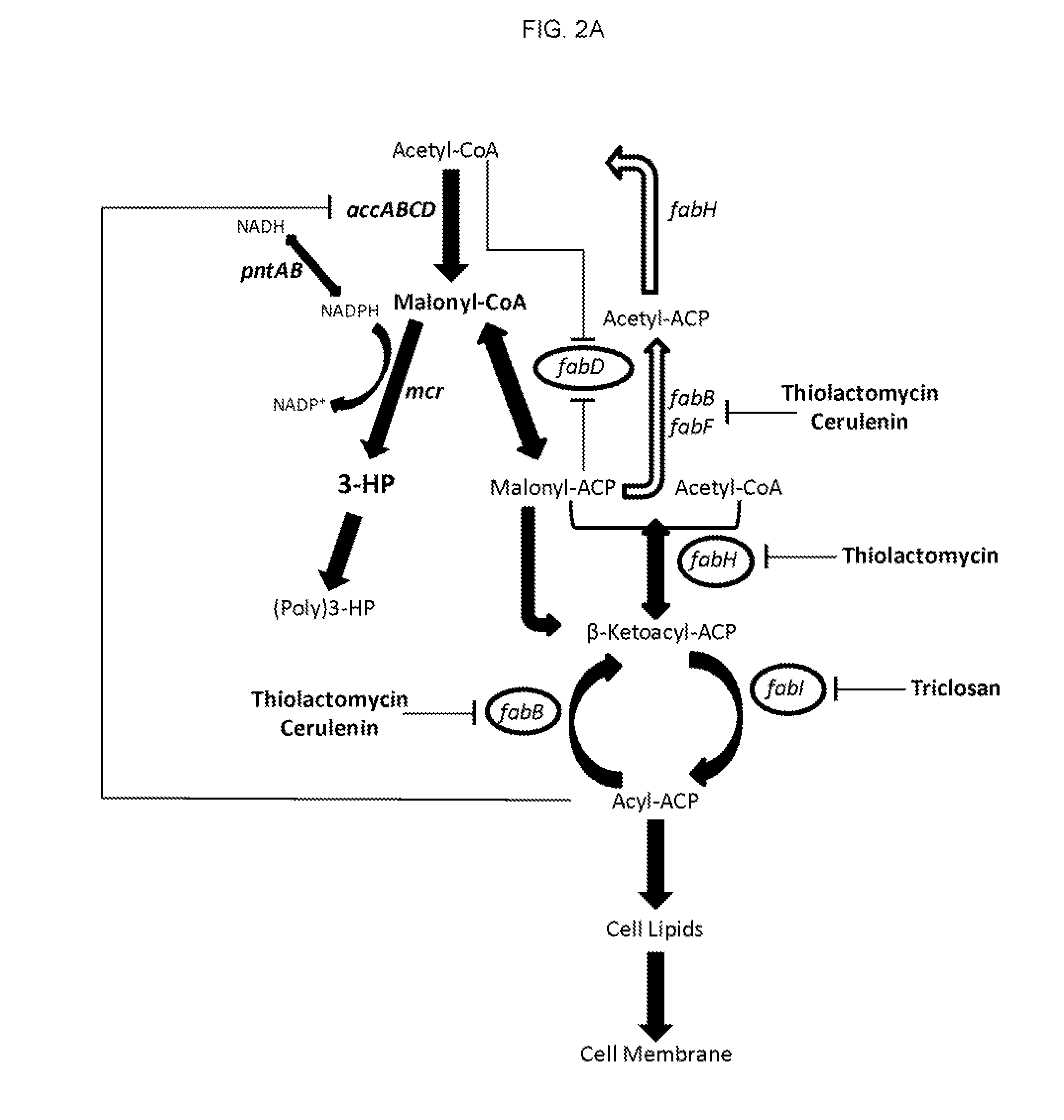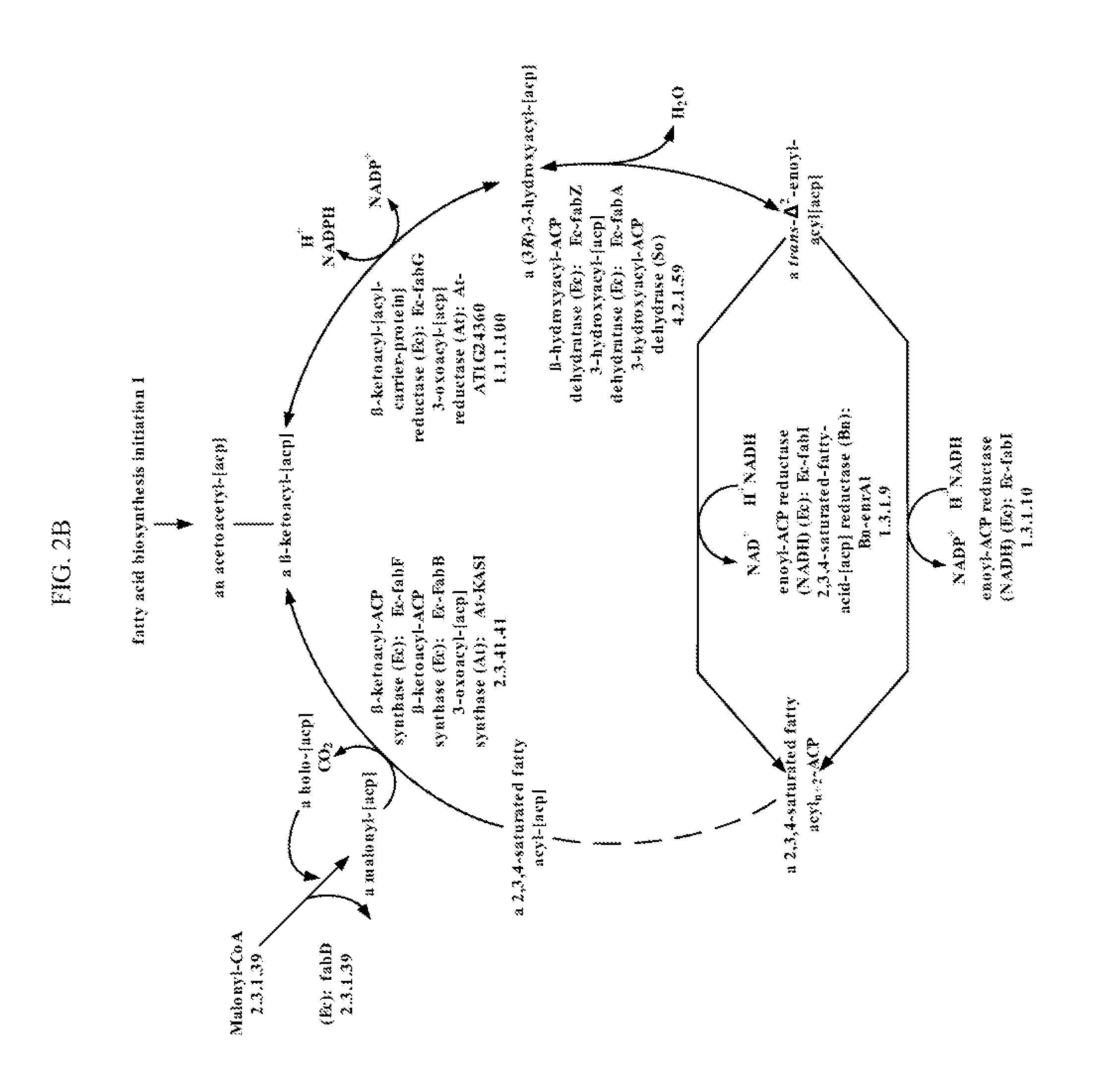Methods for producing 3-hydroxypropionic acid and other products
a technology of propionic acid and 3-hydroxypropionic acid, which is applied in the direction of biomass after-treatment, bulk chemical production, transferases, etc., to achieve the effect of increasing the enzymatic activity of the organism's acetyl-coa carboxylase pathway
- Summary
- Abstract
- Description
- Claims
- Application Information
AI Technical Summary
Benefits of technology
Problems solved by technology
Method used
Image
Examples
example 1
Construction of plasmids expressing malonyl-CoA reductase (mcr)
[0431]The nucleotide sequence for the malonyl-CoA reductase gene from Chloroflexus aurantiacus was codon-optimized for E. coli according to a service from DNA2.0 (Menlo Park, Calif. USA), a commercial DNA gene synthesis provider. This gene sequence (SEQ ID NO:803) incorporated an EcoRI restriction site before the start codon and was followed by a HindIII restriction site. In addition, a ribosomal binding site was placed in front of the start codon. This gene construct was synthesized by DNA2.0 and provided in a pJ206 vector backbone (SEQ ID NO:804). Plasmid DNA pJ206 containing the synthesized mcr gene was subjected to enzymatic restriction digestion with the enzymes EcoRI and HindIII obtained from New England BioLabs (Ipswich, Mass. USA) according to manufacturer's instructions. The digestion mixture was separated by agarose gel electrophoresis and the appropriate DNA fragment recovered as described in the Common Method...
example 2
Construction of a Plasmid Expressing Transhydrogenase (pntAB)
[0435]A fusion of the inducer-independent E. coli promoter derived from the tpiA gene (PtpiA) and the pyridine nucleotide transhydrogenase genes, pntAB, (SEQ ID NO:779 and SEQ ID NO:781) was created by amplifying the tpiA promoter region and pntAB region from genomic E. coli K12 DNA by polymerase chain reactions. For the pntAB genes, the region was amplified using the pntAB forward primer GGGAACCATGGCAATTGGCATACCAAG (SEQ ID NO:807, noting that all primers disclosed herein are artificial sequences) containing a NcoI site that incorporates the initiator Met for the protein sequence of pntA and the pntAB reverse primer GGGTTACAGAGCTTTCAGGATTGCATCC (SEQ ID NO:808). Likewise, the PtpiA region was amplified using the forward primer GGGAACGGCGGGGAAAAACAAACGTT (SEQ ID NO:809) and the reverse primer GGTCCATGGTAATTCTCCACGCTTATAAGC (SEQ ID NO:810) containing a NcoI restriction site. Polymerase chain reaction products were purified us...
example 3
Construction of a plasmid expressing acetyl-CoA carboxylase (accABCD)
[0439]A plasmid carrying two operons able to express the components the acetyl-CoA carboxyltransferase complex from E. coli was constructed by DNA2.0 (Menlo Park, Calif. USA), a commercial DNA gene synthesis provider. This construct incorporated the DNA sequences of the accA and accD genes under control of an inducer-independent promoter derived from the E. coli tpiA gene, and the DNA sequences of. the accB and accC genes under control of an inducer-independent promoter derived from the E. coli rpiA genes. Each coding sequence was preceded by a ribosome-binding sequence. The designed operons were provided in a pJ251 vector backbone and was designated pJ251:26385 (SEQ ID NO:817).
[0440]The tpiA promoter of the pJ251:26385 plasmid was altered to provide better expression. This modification was incorporated by amplifying the pJ251:26385 plasmid with the forward primer GCGGGGCAGGAGGAAAAACATG (SEQ ID NO:818) and the reve...
PUM
| Property | Measurement | Unit |
|---|---|---|
| fatty acid synthase | aaaaa | aaaaa |
| temperature-sensitive beta-ketoacyl-ACP | aaaaa | aaaaa |
| temperature-sensitive enoyl-ACP reductase activity | aaaaa | aaaaa |
Abstract
Description
Claims
Application Information
 Login to View More
Login to View More - R&D
- Intellectual Property
- Life Sciences
- Materials
- Tech Scout
- Unparalleled Data Quality
- Higher Quality Content
- 60% Fewer Hallucinations
Browse by: Latest US Patents, China's latest patents, Technical Efficacy Thesaurus, Application Domain, Technology Topic, Popular Technical Reports.
© 2025 PatSnap. All rights reserved.Legal|Privacy policy|Modern Slavery Act Transparency Statement|Sitemap|About US| Contact US: help@patsnap.com



